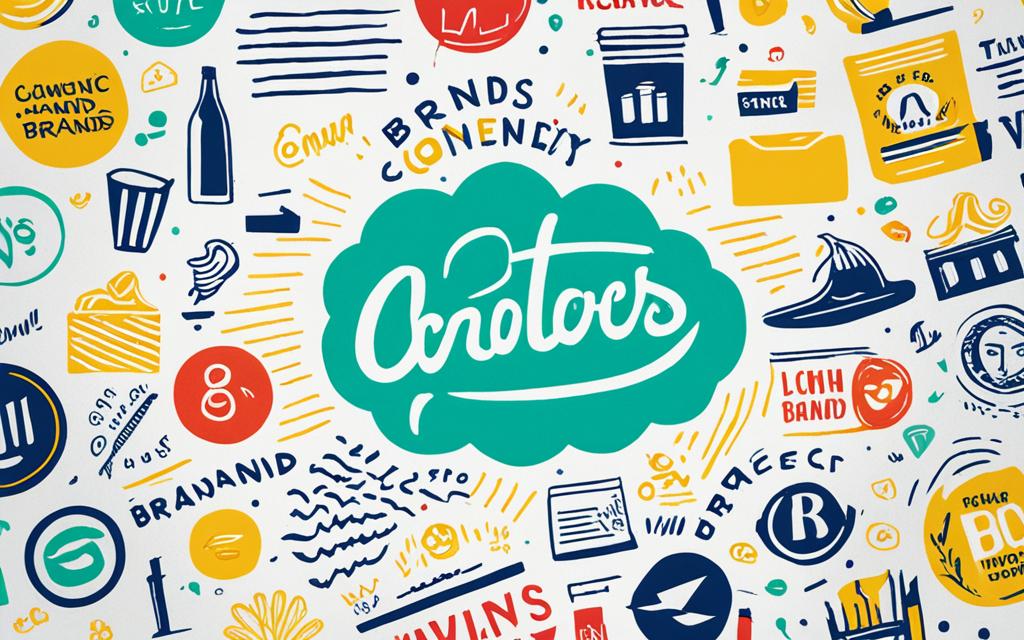In today’s fast-paced digital landscape, where attention spans are fleeting and competition is fierce, the power of storytelling has emerged as a transformative force in the world of marketing. Crafting compelling narratives has become a strategic imperative for brands seeking to forge meaningful connections with their target audience. By harnessing the emotive power of storytelling, you can captivate your audience, foster brand loyalty, and ultimately drive business growth.
This article delves into the art of brand storytelling, exploring the fundamental principles that underpin the creation of captivating narratives. From understanding the power of storytelling in marketing to uncovering the key elements of a compelling narrative, you’ll discover how to elevate your brand’s voice and leave a lasting impression on your audience.
Understanding Brand Storytelling
Storytelling has become a powerful tool in the world of marketing and branding. Brands that successfully craft compelling narratives can captivate their audiences, fostering emotional connections and creating lasting impressions. This section explores the importance of brand storytelling and examines the ways in which it can humanize a brand, differentiate it from competitors, and build trust with consumers.
The Power of Storytelling in Marketing
Effective brand storytelling has the ability to transcend the traditional boundaries of marketing. It goes beyond simply promoting product features or service offerings. When done right, storytelling can bring a brand to life, making it more relatable and memorable to the target audience. By crafting narratives that resonate emotionally, brands can create a deeper bond with consumers, ultimately driving engagement, loyalty, and advocacy.
Why Brands Need to Tell Compelling Stories
In today’s crowded and competitive marketplace, brands must prioritize crafting compelling narratives to stand out and differentiate themselves. Effective storytelling can serve as a powerful tool for building trust, establishing brand authenticity, and fostering a sense of community among consumers. By sharing stories that align with their values and aspirations, brands can create a deeper connection that goes beyond the transactional nature of a purchase.
| Benefits of Effective Brand Storytelling | Examples of Successful Brand Storytelling Campaigns |
|---|---|
|
|
By understanding the power of brand storytelling and why it is essential for modern marketing, brands can unlock new opportunities to captivate their audiences, differentiate themselves, and foster long-lasting connections with consumers.
Crafting Compelling Narratives: The Art of Brand Storytelling
In the world of marketing, the art of brand storytelling has emerged as a powerful tool for captivating audiences and forging lasting connections. This section delves into the nuances of crafting compelling narratives that resonate with your target audience and elevate your brand’s image.
Identifying your brand’s unique story is the first step in this journey. What sets your brand apart? What experiences, values, or aspirations do you want to convey? By tapping into the essence of your brand, you can craft a narrative that resonates with your audience on a deeper level.
Developing a powerful narrative arc is crucial for keeping your audience engaged. Your story should have a clear beginning, middle, and end, with a compelling plot that takes your audience on an emotional journey. Leverage storytelling techniques such as character development, conflict, and resolution to keep your audience hooked.
Ultimately, the key to effective brand storytelling lies in your ability to connect with your audience. Understand their needs, pain points, and aspirations, and craft a narrative that speaks directly to them. By tapping into their emotions and creating a sense of shared experience, you can foster a deeper, more meaningful connection with your brand.
| Elements of Compelling Brand Narratives | Description |
|---|---|
| Unique Brand Identity | Articulate what makes your brand distinct and captivating. |
| Emotional Connection | Craft a narrative that resonates with your audience’s values and aspirations. |
| Engaging Storytelling | Leverage storytelling techniques to create a captivating narrative arc. |
| Audience-Centric Approach | Understand and address the needs and pain points of your target audience. |
Remember, the art of brand storytelling is an ever-evolving craft. Continuously refine your approach, stay attuned to your audience’s changing preferences, and adapt your narrative to ensure it remains captivating and relevant.
Key Elements of a Compelling Narrative
As brands strive to captivate their audience through storytelling, two key elements emerge as essential: developing relatable characters and crafting a captivating plot. This section explores the importance of these components in creating a narrative that resonates with your target audience and drives your brand’s narrative forward.
Developing Relatable Characters
The success of your brand’s story hinges on the audience’s ability to connect with the characters. Crafting characters that are authentic, multidimensional, and reflect the values and aspirations of your target audience is crucial. By infusing your characters with relatable qualities, you can foster a deep emotional bond between the audience and your brand’s narrative.
To develop relatable characters, consider the following strategies:
- Imbue your characters with realistic flaws and struggles that mirror the experiences of your audience.
- Give your characters distinct personalities, motivations, and decision-making processes that resonate with your target demographic.
- Ensure your characters evolve and grow throughout the narrative, mirroring the journeys and transformations your audience may experience.
Creating a Captivating Plot
A compelling narrative arc is the backbone of any successful brand storytelling. By crafting a plot that hooks the audience, builds tension, and delivers a satisfying resolution, you can create a narrative that captivates and inspires your audience.
When developing a captivating plot, consider the following techniques:
- Establish a clear beginning, middle, and end that follows a logical progression, building momentum and intrigue throughout the story.
- Incorporate conflict, obstacles, and challenges that your characters must overcome, creating a sense of drama and suspense that keeps the audience engaged.
- Craft a meaningful resolution that aligns with your brand’s values and resonates with your audience’s desires and expectations.
By mastering the art of developing relatable characters and crafting a captivating plot, brands can create narratives that truly captivate and inspire their audience, driving deeper connections and fostering long-lasting loyalty.
| Strategies for Developing Relatable Characters | Techniques for Creating a Captivating Plot |
|---|---|
|
|
“The most successful brands are those that can create narratives that resonate with their audience on an emotional level, and that all starts with the characters and the plot.”
By mastering these key elements of a compelling narrative, brands can captivate their audience and drive the story forward in a way that truly resonates with their target demographic.
Techniques for Effective Storytelling
As brands strive to captivate their audience, leveraging various storytelling techniques can significantly enhance the impact of their narratives. This section delves into the powerful strategies that can elevate your brand’s storytelling and engage your target audience on a deeper level.
Embrace Sensory Details
Incorporate vivid sensory details into your stories to transport your audience and make your narratives more immersive. By appealing to the senses of sight, sound, smell, taste, and touch, you can create a more memorable and engaging experience for your readers. Descriptions that evoke vivid imagery and sensations can help your audience feel more connected to the story.
Inject Humor or Emotion
Harnessing the power of humor or emotion can be a highly effective way to connect with your audience on a personal level. Stories that evoke laughter, joy, sadness, or other strong emotions can create a lasting impression and foster a deeper emotional resonance with your brand. By tapping into these universal human experiences, you can create a more relatable and compelling narrative.
Explore Different Narrative Perspectives
Experiment with different narrative perspectives to add depth and complexity to your stories. Consider shifting between first-person, second-person, or third-person points of view to provide a unique and engaging storytelling experience. Alternating perspectives can help your audience gain a more well-rounded understanding of the characters and the narrative’s unfolding events.
| Storytelling Technique | Description | Benefits |
|---|---|---|
| Sensory Details | Incorporating vivid descriptions that appeal to the senses (sight, sound, smell, taste, touch) | Enhances audience immersion and creates a more memorable experience |
| Humor or Emotion | Leveraging humor, joy, sadness, or other strong emotions to connect with the audience | Fosters a deeper emotional resonance and creates a more relatable narrative |
| Narrative Perspectives | Exploring different points of view, such as first-person, second-person, or third-person | Adds depth and complexity to the storytelling, providing a more well-rounded understanding for the audience |
By mastering these powerful storytelling techniques, brands can craft narratives that captivate their audience, leaving a lasting impression and strengthening their connection with the brand.
“The greatest stories are those that resonate with us, that make us feel seen and understood.”
Conclusion
In the ever-evolving marketing landscape, brand storytelling has emerged as a powerful tool for businesses to captivate their audience and forge lasting connections. By delving into the art of crafting compelling narratives, brands can differentiate themselves, build brand loyalty, and ultimately drive business growth.
Throughout this article, we’ve explored the key elements of successful brand storytelling, from developing relatable characters and creating captivating plots to leveraging effective storytelling techniques. These insights provide a roadmap for brands to elevate their marketing efforts and engage their target audience in a meaningful way.
As you embark on your own brand-building journey, we encourage you to embrace the principles of brand storytelling and bring your brand’s unique story to life. By crafting narratives that resonate with your customers, you can create a lasting impact and position your brand as a trusted and influential voice in your industry. The power of brand storytelling lies in its ability to transcend the traditional boundaries of marketing, captivating hearts and minds alike.






